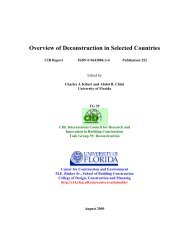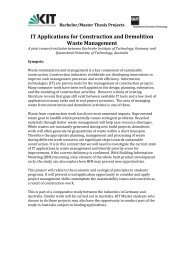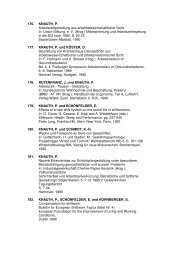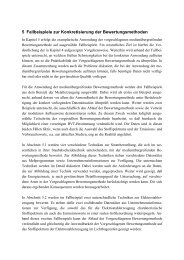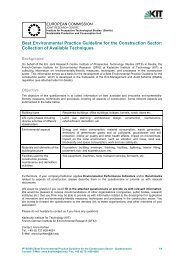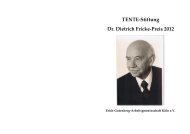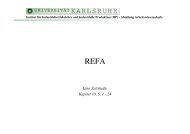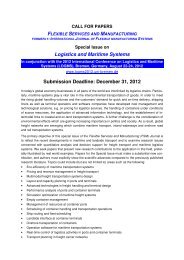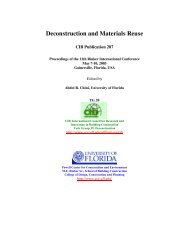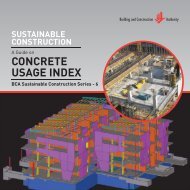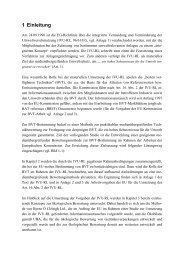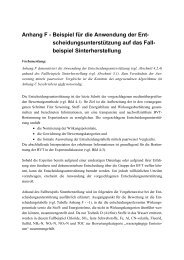Waste reduction final report -4 - Test Input
Waste reduction final report -4 - Test Input
Waste reduction final report -4 - Test Input
You also want an ePaper? Increase the reach of your titles
YUMPU automatically turns print PDFs into web optimized ePapers that Google loves.
using concrete from the factory 500 m away. Due to today’s circumstances, it can’t be<br />
consequent in sustainable thinking in the whole. But such buildings show possibilities and<br />
can therefore have a signalling effect for the future.<br />
Furthermore, supply driven architecture 34 , architecture with component modules or intelligent<br />
buildings design 35 could have a significant influence on construction waste emergence in the<br />
future.<br />
Discussion about construction waste has two levels: Firstly, there is the construction waste<br />
emerging today and in the next few years. These are materials which were used many years<br />
ago. Intensified selective demolition could e.g. help to maximize construction waste reuse<br />
and recycling. Secondly, there is the issue of construction materials used today in order to<br />
avoid waste in future. Within this second level, there are again two time spans to consider:<br />
Construction materials incorporated for 50 to 100 years; and materials with a much shorter<br />
lifetime and renewable rate.<br />
Financial incentives for companies can be made by the government by increasing the price<br />
for primary resources and for disposal (landfilling, incineration plant). Furthermore,<br />
resources could be brought to shortage by establishing confinements for cheap imports or by<br />
limiting gravel excavation authorisations. In spite of such possibilities, secondary resources<br />
will not be cheaper than primary resources in the short term. Acceptance for this should be<br />
build up. Only if secondary construction materials are fostered, if they are broadly accepted,<br />
and if new market areas are established, a quite fast development in resources management<br />
can be achieved.<br />
Federalism complicates communication between the cantons and the federal government and<br />
makes execution of the laws unclear. Additionally, the four languages spoken in Switzerland<br />
can hinder a free interexchange of information between people from the industry. As a result,<br />
it should be further tried to bring together cantonal experiences and people from different<br />
(language) regions.<br />
34 Supply Driven Architecture is architecture in which the availability of reusable components forms an explicit<br />
factor in the design process and in the decision making of architects [Twente 2009. Supply Driven Architecture.<br />
Power Point Presentation, University of Twente, NL]<br />
35 Design which allows different uses of a building, e.g. a new set-up of the rooms after some years.<br />
114



